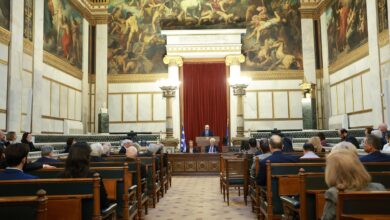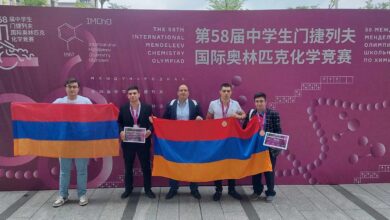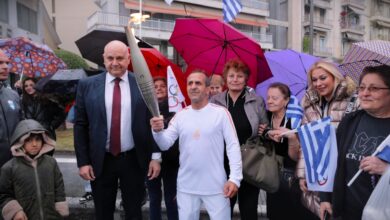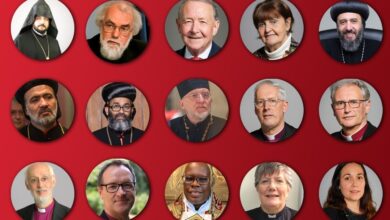Beirut’s little Armenia keeps tradition alive

Bourj Hammoud, also known as “Little Armenia,” is a suburb in the Metn district of northern Beirut. The city was created by survivors of the Armenian genocide of 1915, most of whom settled there after the death marches in Deir ez-Zor, Syria. Today, the second generation of Armenians after the genocide are trying to find ways to save their heritage, mainly through the promotion of traditional crafts, Florence Massena writes in an article published by Al-Monitor.
In the streets of Bourj Hammoud, you can find plenty of different goods: spices, soaps, candied and dried fruits, wooden molds and many others. And nestled together, jewelry, leather goods and tailors’ shops keep open for those interested in handicrafts, with storefronts in Armenian, Arabic and sometimes English.
These shops do not look fancy, yet are a very important trace of Armenian cultural heritage, after 100 years of exile in Lebanon. One of the patrons helping to sustain this culture on a daily basis is Arpi Mangassarian, an architect working in the Bourj Hammoud municipality planning office. In 2009, she helped the French-speaking cultural magazine Agenda Culturel contact local craftsmen for a book.
“I always had a passion for crafts. My father was an artist and a handyman,” she told Al-Monitor. “This book made me realize that these people need promotion. So I restored a traditional pink villa and in 2011 opened the Badguer Cultural Center to organize visits, tours and exhibitions about traditional Armenian crafts. Our role is to put the spotlight on the artisans by bringing visitors to their stores to discover their work, like actors that we bring on stage. We have mainly goldsmiths, especially for Italy, leather shoes and bags, clothes, fabrics for fashion designers, turners and smelters’ shops.”
Badguer’s aim is to help the craftsmen keep their traditions alive and help them face the harsh realities of economics and modernity. “After the Lebanese civil war, there was like an embargo over goods produced in Lebanon for exportation, and cheap-standard goods arrived on the market from China and Syria, for example,” Mangassarian said.
“Many children of the local artisans started to think about taking jobs in big companies so they could provide for their family, so we lost around 40% of the traditional shops in Bourj Hammoud. And it is still going on. … The leather sector is declining because of international competition and deterioration of purchasing power.”
Badguer was founded as a way to enhance and promote the artisans’ activities, putting them in touch with designers, stylists and architects that might be interested in quality traditional goods, but also to show the young generations that they can make money in their parents’ jobs.
“Usually, the fathers teach their children how to work, and they take over their business later on,” Mangassarian said. “I want to make them realize that good work brings good money. All they need now is promotion.”
Ago Karakolmikilian and his brother took over their father’s shoe shop. “It’s a family business, and my father was tired after all these years,” he told Al-Monitor. “I have learned everything from him. For us, it’s a cultural resistance. It’s a hard business, but we need to keep going. Plus, we produce popular and high-quality styles to fit any budget.” For him, Armenian culture has to be perpetuated through “Armenian schools, language and manufacturing, forever.”
Other artisans’ sons decide to add more specialties to their fathers’ activities, and are learning other crafts in schools. That is the case of Roger Astourian, a diamond setter for over 20 years. “I work with my father now, but not like him,” he said. “My father has been a goldsmith for over 50 years, so I work in his store to diversify his business.”
This year, which marks the centenary of the Armenian genocide, the Badguer Center prepared a special cultural program by the name of “The Armenian Rebirth After the Genocide.” For Mangassarian, not focusing on 1915 was very important: “Everyone talks about the genocide, but what happened after? We are people; we have a living culture, artisans that survived and perpetuated through all this time.”
She organized a four-pronged program: an exhibition of 100 Armenian calendars provided by associations and institutions that publish them every year, with poems and images from Armenia and Lebanon; lessons about two Kilim, the flat, tapestry-woven carpets traditionally from the Balkans to Pakistan made on weaving machines that will lead to future carpets and rug exhibitions; an exhibition of Armenian embroidery; and storytelling by people who remember their family histories.
“Usually, the stories are told in private, at home, so it will be new and maybe helpful to keep the memory alive,” she said. “The Armenians transmitted such powerful stories about the past. It is not only about deportation and genocide; it is also about life in the villages before 1915, and also about life in the host countries.”
Arpi herself was raised on these stories, told by her grandparents. She reminisced, “My father used to ask them a lot of questions, so they wouldn’t stop talking. My brother and I unconsciously kept this memory alive through our school compositions, but also through singing and dancing. My mother was part of an Armenian choir interpreting pieces from the traditional composer Komitas, an Armenian priest who is known as the founder of the Armenian national school of music at the beginning of the 20th century, and my grandmother used to dance and sing songs from her village in Armenia.”
This is why she asked people she knew, of her age and younger, to come and tell her their own family stories, which she now wants to record and diffuse. “You know, on these calendars we are going to exhibit, there is a sentence on every page,” she added. “It says, ‘Be proud of your past, be proud and keep your cultural heritage.’ That is what I am trying to do in Bourj Hammoud.”








